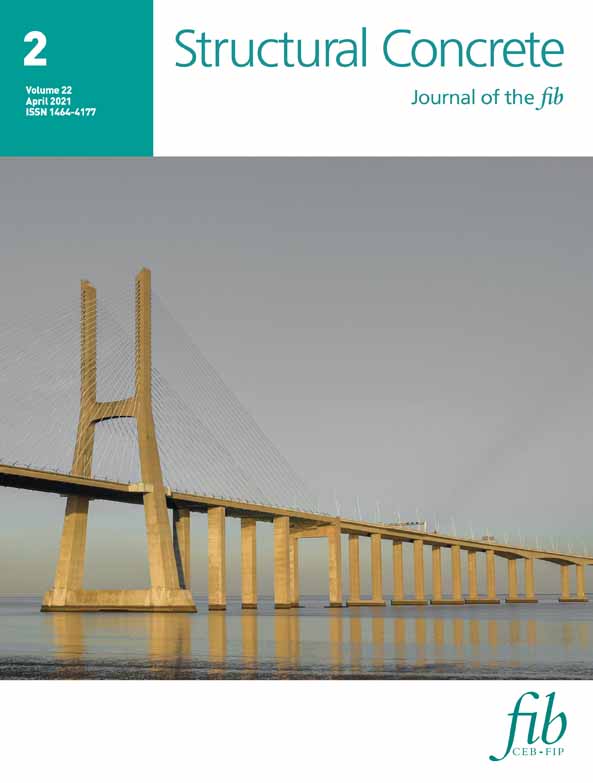Factors governing the fire response of prestressed reactive powder concrete beams
Funding information: National Natural Science Foundation of China, Grant/Award Numbers: 51408341, 51878399
Abstract
This article presents the details of a fire test on eight prestressed reactive powder concrete (RPC) beams cured with 150°C hot air. The test specimens varied in load ratio, cover thickness of tendons, bonded and unbonded tendons, and partial prestressing ratio. The thermal fields, deflection behavior, effective prestress, fire endurance, failure modes, and crack patterns of the beams were observed and recorded, revealing that no obvious fire-induced spalling occurred on the prestressed RPC beams. The fire test results indicate that the failure of prestressed RPC beams was driven by direct fire exposure and fracture of tendons and longitudinal rebars after generation of wide cracks in the beams. In extreme fire, prestressed RPC beams that were under-reinforced at ambient temperature may fail as low-reinforced beams. Fire resistance of the prestressed RPC beams dramatically improved with a decrease of load ratio and increase of cover thickness of tendons. Bonded prestressed RPC beams showed superior performance over equivalent unbonded prestressed RPC beams in fire. The whole-scale transferring effect of prestress loss in unbonded beams should be considered for fire resistance performance design based on structural systems.




